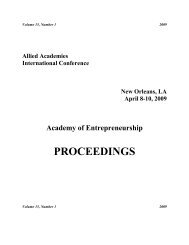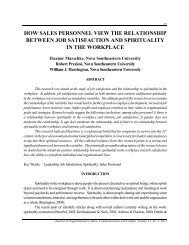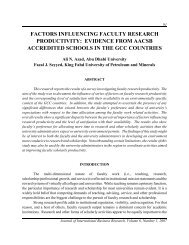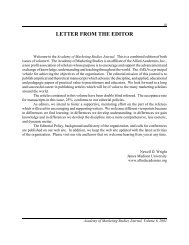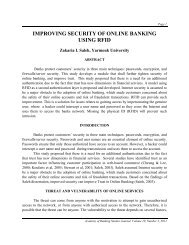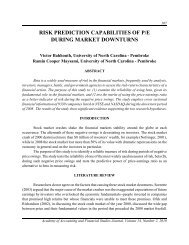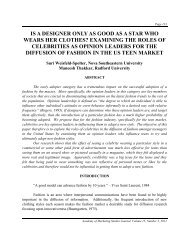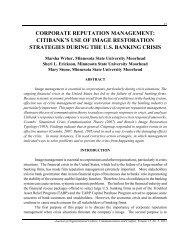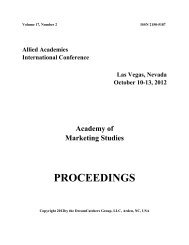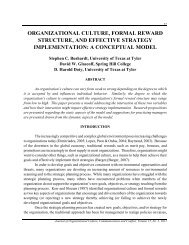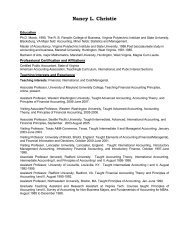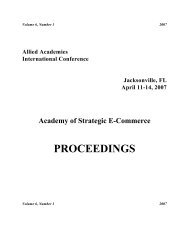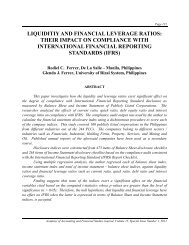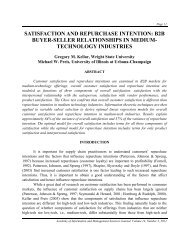AOCCC - Allied Academies
AOCCC - Allied Academies
AOCCC - Allied Academies
Create successful ePaper yourself
Turn your PDF publications into a flip-book with our unique Google optimized e-Paper software.
page 16<br />
<strong>Allied</strong> <strong>Academies</strong> International Conference<br />
.6% Native American, and 2.2% specified as “other”, 43.3% responded that they had high school<br />
diplomas, 11.8% indicated they had associate degrees, 38.9% stated they held a bachelors<br />
degree, and 3.9% stated that they had master’s degrees. .3% suggested they had doctorates. The<br />
average work experience of this sample was 6 years and 5 months. 92.4% of the respondents had<br />
at least one year of work experience, 83.6% reported work experience of at least 2 years, 46.4%<br />
reported 5 years or more, and 14.8% expressed that they had worked for at least 10 years. We<br />
believe that this demographic composition of the sample makes a strong argument for the<br />
generalizability of the sample to an average “working” population. The average participant also<br />
maintained a 2.9 GPA.<br />
Attributions<br />
MEASURES<br />
For the measurement of performance attributions, we used the Causal Dimension Scale II<br />
(CDS II), developed by McAuley, Duncan and Russell (1992). The CDS II consists of a 12<br />
questions, which make up 4 scales, with three items per scale, which evaluated the attributional<br />
dimensions of (1) locus of causality, (2) external control, (3) stability, and (4) personal control.<br />
Reliabilities using the CDS II are generally reported to be high (McAuley, Duncan and Russell,<br />
1992). The reliabilities of the scales in our sample are as follows: Locus of causality α = .74,<br />
external control α =.7, stability α = .6, and personal control α.= .83<br />
Escalation of Commitment<br />
Escalation of commitment was assessed with an adaptation of the blank radar plane<br />
scenario, which has been established and validated in the literature (Arkes & Blumer, 1985; D.E.<br />
Conlon & Garland, 1993; Garland, 1990; Garland & Conlon, 1998). On the basis of the scenario,<br />
participants indicated via two questions on a scale of 0 to 100% the extent to which they would<br />
continue to pursue the project and invest more resources toward its completion.<br />
ANALYSIS<br />
We conducted a series of regression analyses to examine the relationships between<br />
attribution styles, job satisfaction, and turnover intentions using SPSS. Means, standard<br />
deviations, reliabilities, and correlations are reported in Table 1.<br />
Orlando, 2011<br />
Proceedings of the Academy of Organizational Culture, Communications and Conflict, V.16(1)



